 W
WExonumia are numismatic items other than coins and paper money. This includes "Good For" tokens, badges, counterstamped coins, elongated coins, encased coins, souvenir medallions, tags, wooden nickels and other similar items. It is related to numismatics, and many coin collectors are also exonumists.
 W
WAlaskan parchment scrip was in circulation from 1816 to 1867, issued by the Russian-American Company (RAC) in the colony of Russian America. Also known as seal skin or walrus skin notes, this type of scrip was printed on parchment, and sometimes on walrus hide, in denominations of 10, 25, 50 kopecks and 1, 5, 10, and 25 rubles.
 W
WAmerican Arts Commemorative Series Medallions are a series of ten gold bullion medallions that were produced by the United States Mint from 1980 to 1984. They were sold to compete with the South African Krugerrand and other bullion coins.
 W
WThe American Vecturist Association is an organization of transportation token collectors in the United States and Canada, as well as worldwide. Members of the AVA receive the Fare Box, the monthly newsletter of the AVA. The Fare Box contains advertisements, stories, and information about various tokens, as well as resources to buy, sell, and trade tokens. AVA members are also eligible to join the New Issue Service, which mails new transportation tokens to its members for a nominal fee.
 W
WA bakery token is a form of commercial token sold by and used in bakeries in the United States and postconfederation Canada primarily in the late 19th and early 20th century. The tokens, usually made of brass, copper or aluminum, were given in lieu of change as a way of encouraging customers to return to the store. They were also given to suppliers in smaller locations as partial payments. They came in denominations of 1/2, 1, and 2 loaf.
 W
WA bracteate is a flat, thin, single-sided gold medal worn as jewelry that was produced in Northern Europe predominantly during the Migration Period of the Germanic Iron Age. The term is also used for thin discs, especially in gold, to be sewn onto clothing in the ancient world, as found for example in the ancient Persian Oxus treasure, and also later silver coins produced in central Europe during the Early Middle Ages.
 W
WCasino tokens are small discs used in lieu of currency in casinos. Colored metal, injection-molded plastic or compression molded clay tokens of various denominations are used primarily in table games, as opposed to metal token coins, used primarily in slot machines. Casino tokens are also widely used as play money in casual or tournament games.
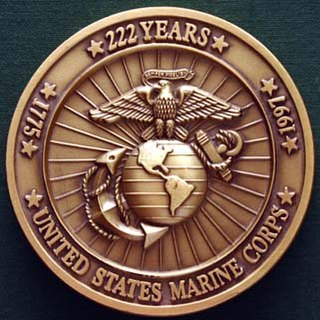 W
WA challenge coin is a small coin or medallion, bearing an organization's insignia or emblem and carried by the organization's members. Traditionally, they might be given to prove membership when challenged and to enhance morale. Some challenge coins have created controversy and their creators have been threatened with jail. They are also collected by service members and law enforcement personnel. Historically, challenge coins were presented by unit commanders in recognition of special achievement by a member of the unit. They could also be exchanged in recognition of visits to an organization.
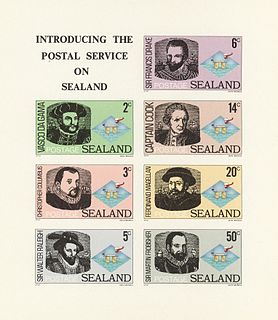 W
WThe Principality of Sealand, a micronation founded on a former World War II fort in the North Sea, has issued a number of coins and stamps for collectors. These coins and stamps are denominated in "Sealand dollars" (SX$). Sealand coins can be considered souvenirs only or "rounds" since they do not circulate anywhere and are not accepted as currency by any nation.
 W
WThe coins of Lundy are unofficial issues of currency from the island of Lundy, in the Bristol Channel off the west coast of England. Two bronze coins, the "half puffin" and "one puffin", were issued with a 1929 date and featured a portrait of Martin Coles Harman who owned the island and was responsible for the issue. The coins were struck again with slightly modified designs and updated dates in 1965, 1977, and 2011, as commemorative tokens not intended for circulation.
 W
WColnect Collectors Club Community is a website containing wiki-like collectables catalogs. It allows collectors to manage their personal collection using these catalogs and automatically match their swap/wish-lists with those of other collectors. Colnect provides a marketplace dedicated to buying and selling collectibles. Colnect's phone cards catalog is the biggest in the world.
 W
WA communion token is a metal token issued to members of Reformed churches in order to provide them entrance to the Lord's Supper. There were many types issued in Scotland in the 18th and 19th centuries, but they were largely superseded by communion cards.
 W
WA contorniate, or contourniate, is a type of ancient Roman medal or medallion of bronze issued in the fourth and fifth centuries CE, having a deep furrow on the contour or edge, as if the object had been turned in a lathe. The extant contorniates show portraits of various earlier emperors or of cultural figures such as Homer, Solon, Euclid, Pythagoras, Socrates, Sallust, Apollonius Tyaneus, and Apuleius, as well as athletes, whose victories are symbolized by palm leaves and chariots, either bigae or quadrigae. The medals were not used as currency, but may have been distributed as New Year's gifts in association with public spectacles, including chariot races and pantomime.
 W
WThe Curmsun Disc is a concave gold disc of a weight of 25.23 grams (0.890 oz) and a diameter of 4.5 centimetres (1.8 in). The Danish Viking king Harald Bluetooth is mentioned in the inscription of the disc. The disc's characteristics are typical of Ottonian Art.
 W
WA devotional medal is a medal issued for religious devotion most commonly associated with Catholic faith, but sometimes used by adherents of the Orthodox, Anglican, and Lutheran denominations.
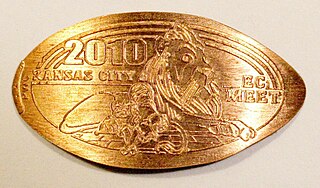 W
WAn elongated coin is one that has been flattened or stretched, and embossed with a new design. Such coins are often used as commemorative or souvenir tokens, and it is common to find coin elongation machines in tourism hubs, such as museums, amusement parks, and natural or man-made landmarks.
 W
WThe Eurocheque was a type of cheque used in Europe that was accepted across national borders and which could be written in a variety of currencies.
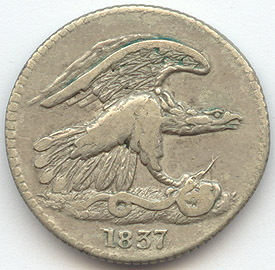 W
WThe Feuchtwanger Cent was a "German Silver" private token coin circulated by Lewis Feuchtwanger during the 1830-1840s in the U.S. Three cent varieties were also available, though not as plentiful as the one cent tokens.
 W
WA geocoin is a metal or wooden token minted in similar fashion to a medallion, token coin, military challenge coin or wooden nickel, for use in geocaching, specifically as form of a calling card. The first geocoins were developed by Jon Stanley as a signature item to be placed in caches.
 W
WGeuzen medals or Beggar's medals were coined during the early days of the Dutch Revolt and the first half of the Eighty Years' War in the 16th century. During that period, many medals, tokens and jetons with a political message were issued. This article deals with the earliest Geuzen medals or tokens, i.e. from the mid-century to 1577.
 W
WA gift card also known as gift certificate in North America, or gift voucher or gift token in the UK is a prepaid stored-value money card, usually issued by a retailer or bank, to be used as an alternative to cash for purchases within a particular store or related businesses. Gift cards are also given out by employers or organizations as rewards or gifts. They may also be distributed by retailers and marketers as part of a promotion strategy, to entice the recipient to come in or return to the store, and at times such cards are called cash cards. Gift cards are generally redeemable only for purchases at the relevant retail premises and cannot be cashed out, and in some situations may be subject to an expiry date or fees. American Express, MasterCard, and Visa offer generic gift cards which need not be redeemed at particular stores, and which are widely used for cashback marketing strategies. A feature of these cards is that they are generally anonymous and are disposed of when the stored value on a card is exhausted.
 W
WJehovah blew with His winds, and they were scattered is a phrase used in the aftermath of the defeat of the Spanish Armada in 1588, when the Spanish fleet was broken up by a storm, which was also called the Protestant Wind. The phrase seems to have had its origin in an inscription on one of the many commemorative medals struck to celebrate the occasion.
 W
WHell money is a form of joss paper printed to resemble legal tender bank notes. The notes are not an official form of recognized currency or legal tender since their sole intended purpose is to be offered as burnt offerings to the deceased as a solution to resolve their assumed monetary problems in the afterlife. This ritual has been practiced by the modern Chinese and across East Asia since the late 19th century. Early 20th century examples bore resemblance to minor commercial currency of the type issued by businesses across China until the mid-1940s.
 W
WThe hobo nickel is a sculptural art form involving the creative modification of small-denomination coins, essentially resulting in miniature bas reliefs. The US nickel coin was favored because of its size, thickness and relative softness. However, the term hobo nickel is generic, as carvings have been made from many different denominations.
 W
WJoss paper, also known as ghost or spirit money, are papercrafts or sheets of paper made into burnt offerings common in Chinese ancestral worship. Worship of gods also uses a similar paper. Joss paper, as well as other papier-mâché items, are also burned or buried in various Asian funerals, "to ensure that the spirit of the deceased has lots of good things in the afterlife." In Taiwan alone, the annual revenue of temples received from burning joss paper was US$400 million as of 2014.
 W
WA medallist or medalist is an artist who designs medals, plaquettes, badges, coins and similar small works in relief in metal. Art medals are a well-known and highly collected form of small bronze sculpture, most often in bronze, and are considered a form of exonumia. "Medalist/medallist" is confusingly the same word used in sport and other areas for the winner of a medal as an award. Medallists very often also design, or produce the dies for coins as well. In modern times medallists are mostly primarily sculptors of larger works, but in the past the number of medals and coins produced were sufficient to allow specialists who spent most of their career producing them. Medallists are also often confusingly referred to as "engravers" in reference works, referring to the "engraving" of dies, although this is often in fact not the technique used; however many also worked in engraving the technique in printmaking.
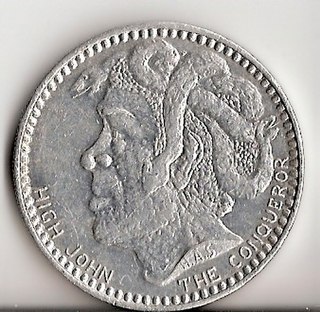 W
WMardi Gras Doubloons are Mardi Gras throws shaped like coins that commemorate various Mardi Gras Krewes. They are typically made of aluminum and are thrown from floats in carnival parades. The first doubloons used as throws from parades of Mardi Gras Krewes date to 1960, and these early doubloons are collectible.
 W
WThe medal of John VIII Palaeologus is a portrait medal by the Italian Renaissance artist Pisanello. It is generally considered to be the first portrait medal of the Renaissance. On the obverse of the medal is a profile portrait of the penultimate Byzantine emperor, John VIII Palaeologus; the reverse contains an image of the emperor on horseback before a wayside cross. Although the date of the work is not clear it was likely to have been some time during 1438 and 1439, the years John was in Italy attending the Council of Ferrara. It is not known whether the emperor himself or his Italian hosts commissioned Pisanello to make the medal, but Leonello d’Este, the heir apparent to the marquisate of Ferrara, has been suggested as the most likely candidate. Several drawings by Pisanello are closely associated with the medal and these include sketches now held in Paris and Chicago.
 W
WA medalist is an artist who designs medals, plaquettes, badges, coins and similar small works in relief in metal. Historically medalists were typically also involved in producing their designs, and were usually either sculptors or goldsmiths by background. In modern times medalists are mostly primarily sculptors of larger works, but in the past the number of medals and coins produced were sufficient to allow specialists who spent most of their career producing them. From the 19th century the education of a medalist often began with as an engraver, or a formal education in an academy, particularly modeling and portraiture. On coins a mark or symbol signifying the medalist as the original designer was often included in a hidden location on the coin and is not to be mistaken for the symbol of the mint master. Artistic medals and plaquettes are often signed prominently by the artist.
 W
WMedallic Art Company, Ltd. based in Dayton, Nevada is "America’s oldest and largest private mint" and specializes in making academic awards, maces, medallions, along with chains of office and universities medals for schools.
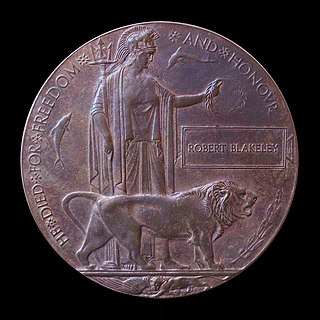 W
WThe Memorial Plaque was issued after the First World War to the next-of-kin of all British Empire service personnel who were killed as a result of the war.
 W
WNASA space-flown Gemini and Apollo medallions were mission-specific commemorative medallions, often astronaut-designed, which were approved by NASA and carried aboard the mission spacecraft into orbit. Beginning with the first crewed Gemini mission in 1965, commemorative medallions were prepared for the astronauts at their request. These were produced by a company only known as Fliteline and were struck either in a pewter-colored base metal, sometimes painted a gold color, or sterling silver, and were flown on all 10 crewed Gemini missions. A Fliteline medallion was designed and produced for Apollo 1, but was never officially flown after a disastrous cabin fire during a launch rehearsal killed the flight crew.
 W
WPhaleristics, from the Greek mythological hero Phalerus via the Latin phalera ('heroics'), sometimes spelled faleristics, is an auxiliary science of history and numismatics which studies orders, fraternities, and award items, such as medals, ribbons, and other decorations.
 W
WPub tokens or tavern tokens or bar tokens or chits are a form of exonumia used in drinking establishments.
 W
WRailway Pay Cheques were metallic tokens or tallies used to ensure appropriate payment to the correctly identified railway employee.
 W
WA scrip is any substitute for legal tender. It is often a form of credit. Scrips have been created for exploitative payment of employees under truck systems, and for use in local commerce at times when regular currency was unavailable, for example in remote coal towns, military bases, ships on long voyages, or occupied countries in wartime. Besides company scrip, other forms of scrip include land scrip, vouchers, token coins such as subway tokens, IOUs, arcade tokens and tickets, and points on some credit cards.
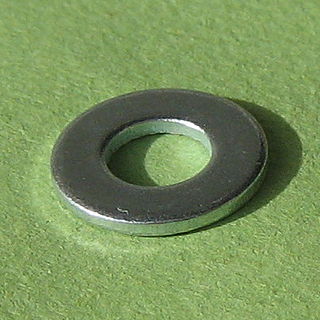 W
WA slug is a counterfeit coin that is used to make illegal purchases from a coin-operated device, such as a vending machine, payphone, parking meter, transit farebox, copy machine, coin laundry, gaming machine, or arcade game. By resembling various features of a genuine coin, including the weight, size, and shape, a slug is designed to trick the machine into accepting it as a real coin.
 W
WA sobriety coin is a token given to Alcoholics Anonymous or other 12 step group members representing the amount of time the member has remained sober. It is traditionally a medallion the size of a poker chip 33 mm (Standard) or 34 mm in diameter marking the sobriety time achieved, awarded for abstaining from alcohol while with the program. In other 12 step programs it is to mark time abstaining from whatever the recipient is staying away from. There is no official AA medallion or chip; they are used in AA culture but not officially Conference Approved, and the AA logo has not been granted for use on medallions.
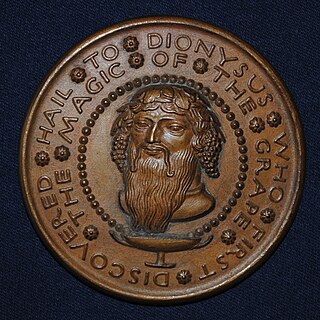 W
WThe Society of Medalists was established in 1930 in the United States to encourage the medallic work of superior sculptors, and to make their creations available to the public. The Society of Medalists was the longest running art medal collector's organization in the United States and released 129 regular issues on a twice yearly basis from 1930 to 1995, as well as special issues marking the Society's 20th, 40th, and 50th anniversaries and the United States Bicentennial in 1976. Much of the inspiration for the Society came from the earlier Circle of Friends of the Medallion, which also issued medals on a semi-annual basis from 1908 to 1915. All issues of the Society were struck by the Medallic Art Company, originally located in New York City
 W
WIn numismatics, token coins or trade tokens are coin-like objects used instead of coins. The field of token coins is part of exonumia and token coins are token money. Tokens have a denomination either shown or implied by size, color or shape. "Tokens" are often made of cheaper metals: copper, pewter, aluminium, brass and tin were commonly used, while bakelite, leather, porcelain, and other less durable materials are also known.
 W
WTrade beads were otherwise decorative glass beads used between the 16th and 20th century as a token money to exchange for goods, services and slaves. Trade beads were used to purchase African resources by early Europeans. This included African slave trade. The beads were integrated in Native American jewelry using various beadwork techniques. Aggry beads are a particular type of decorated glass bead from Ghana.
 W
WIn the United States, a wooden nickel is a wooden token coin, usually issued by a merchant or bank as a promotion, sometimes redeemable for a specific item such as a drink.